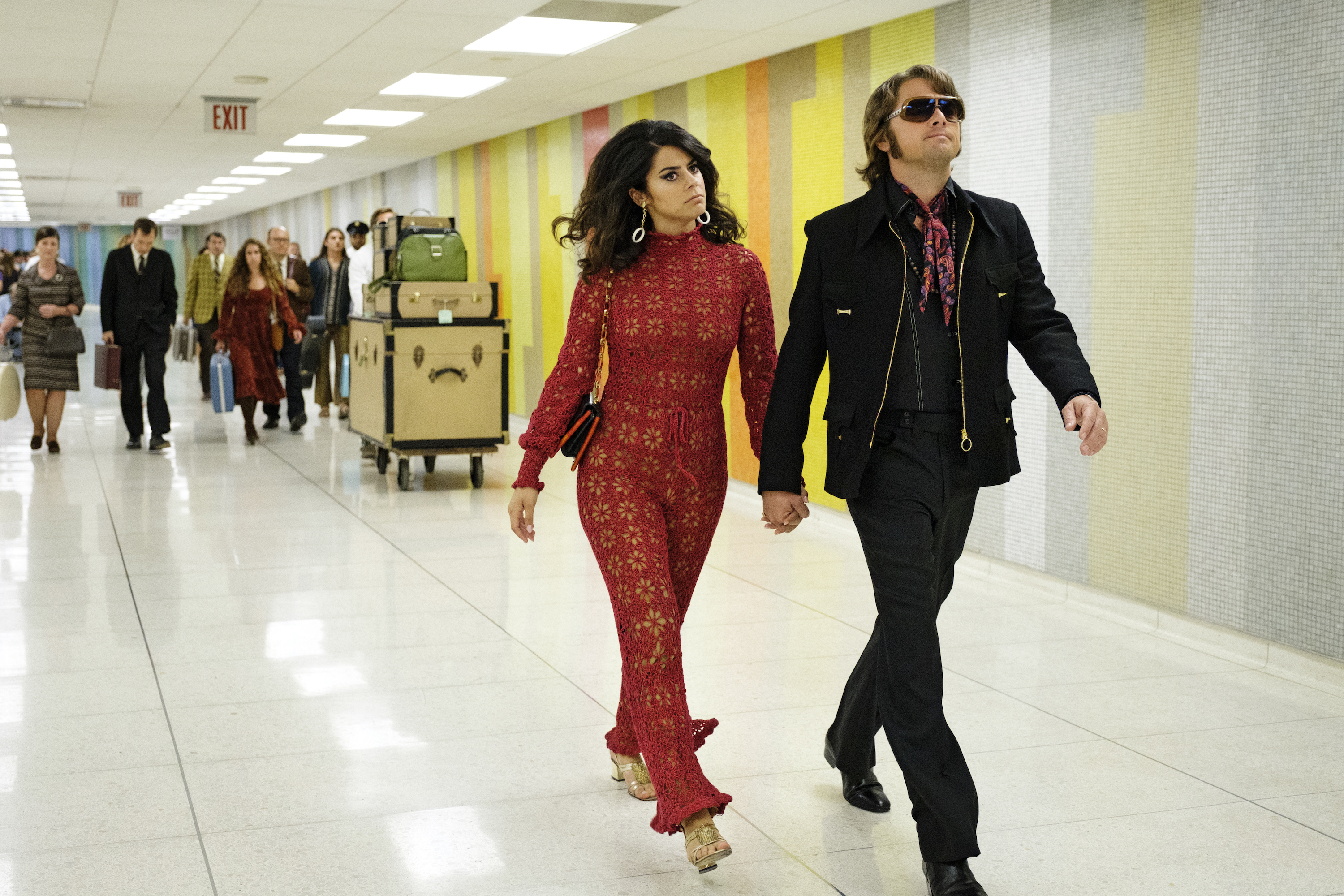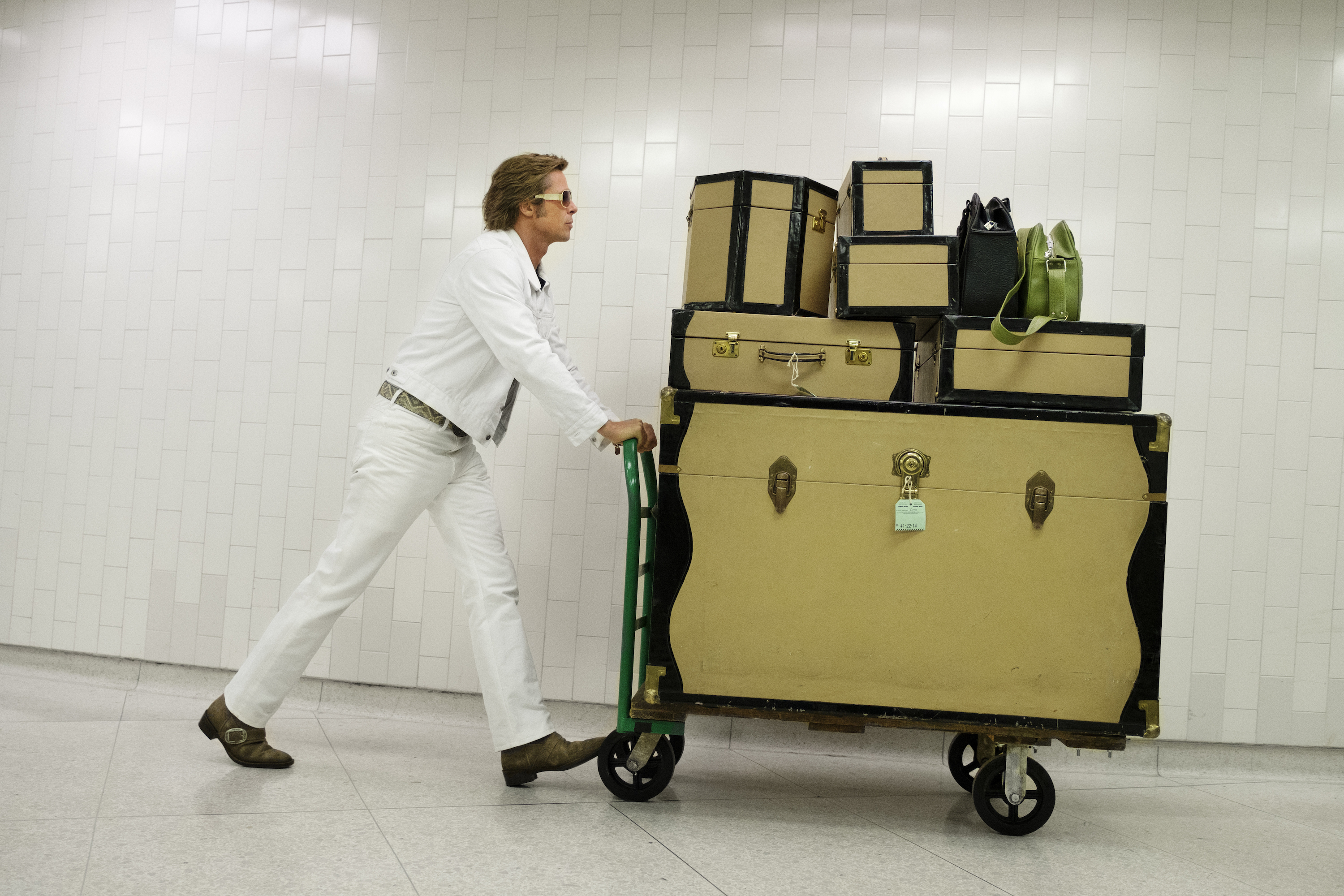Once Upon a Time in… Tarantino’s World
V sat down with Arianne Phillips, the costume designer behind Quentin Tarantino’s latest film.
Our Q&A with Arianne Phillips first appeared in V120, our Fall Preview starring Bella Hadid. Order the issue at vmagazine.myshopify.com.
Don’t expect to see any tie-dye in Quentin Tarantino’s Hippie Hollywood; costume designer Arianne Phillips breaks down this season’s most anticipated film.
V: What was your starting point for Once Upon a Time in…Hollywood?
ARIANNE PHILLIPS: This is my first time working with Quentin [Tarantino]’ I would’ve done anything with him. The starting point is always the script—that is the center of everything. And this was unlike any I’d ever read. It was meticulously detailed and beautifully written, with so much character development. And it’s so richly layered with multiple storylines. Since it’s a movie about Hollywood, you have the opportunity for storytelling both “onscreen” and off.
In a period piece like this, [especially one] set in 1969, it was very important to specifically identify what was [aesthetically] and socially happening in Hollywood [then]. That was super meaty to dig my teeth into. Quentin is also unlike most directors, in that he really has the [vocabulary] to talk about costume [design]. I’ve been super lucky over my career; I’ve worked with Tom Ford and Madonna, and Quentin is right up there with them, in terms of his astute ability to describe what he’s after/ There wasn’t any lack of inspiration; it was more about making choices.
V: So much was going on in 1969 all over the country. How did you highlight this tumultuous period as it manifested in Hollywood specifically?
AP: 1969 is so pivotal because Hollywood was changing, as was the culture [all] around [it]. People didn’t necessarily dress in new clothes, [even within] a whole mix of socioeconomic [classes]. “Hippie Hollywood,” [as Quentin called it], was all about the youth-culture movement. This was what was new, this was what was happening politically, it was about self-expression, and it was hot on the heels of the Summer of Love. L.A. was a place that had its own style.
V: How would you define that “hippie Hollywood” aesthetic?
AP: The important thing to me and Quentin was not to take the cheap shots. Meaning, one of the things we agreed upon early on is not to have any tie-dye or fringe in this movie. It’s too easy. [The fashion landscape] was a mix of the Hollywood crowd that could afford to buy designers like Ossie Clark, Paraphernalia and Holly Harp, and the kids who were cutting up their jeans, wearing their dads’ T-shirts, which was how we [envisioned] the Manson family [in the film].
Also L.A. was a place that had its own style [and its own style icons]—[from] Dennis Hopper to Jim Morrison, you had such a force of style that was happening here. If you look at ’69 in London, or ’69 in New York it’s different from California.
One of the craziest things I noticed, in looking at pictures [from that time], was that most people were barefoot. You would see all of these barefooted kids on Hollywood Boulevard. They weren’t transients—it was [just] the style. Sharon [Tate] was famous for going barefoot; apparently she hated wearing shoes. [But even back then] they had rules; you couldn’t go into restaurants without shoes on, so Sharon would famously put rubber bands between her toes [to stimulate] flip-flops.
V: How did you go about styling the real-life figures in the film, like Sharon Tate?
AP: This movie is so interesting because we have a fictional story at the center. Then we also have real life characters—Bruce Lee, Sharon Tate, Roman Polanski. It’s so juicy for a costume designer to have that ability to marry those worlds. Sharon was photogenic, a great beauty, and has lived on to be a style icon. [But] in the moments with Sharon, played by Margot Robbie, we really wanted to pay respect to who she was [as a person]. Luckily for us, Deborah Tate, Sharon’s sister, was a consultant on the movie. It was incredible to have access to some of Sharon’s clothes and jewelry. Together, Quentin and I identified what we wanted to recreate, [also keeping in mind] that we were making an entertaining film, not a documentary.
V: How did you go about developing Leonardo DiCaprio and Brad Pitt’s styles?
AP: Leo’s character, Rick Dalton, is an actor who was a big TV cowboy star in the ‘50s. Hollywood is changing, maybe a little faster than him. He’s presentational, a movie star—there’s an expectation when you see him. When you [pass] him on the street, he has a sense of ego about him.
Then you have Brad Pitt’s character, Cliff Booth, who has been his long-time stuntman. His job is as the the support guy, the behind-the-scenes, low-key guy. You see [that type] in L.A. all the time—guys who work on movie sets, who [always] wear cargo shorts… Those guys never wear pants. This is the world that I work in.
A talisman for Brad’s character is an original belt buckle from the Stuntmen’s Association, which is [the union] you would have belonged to as a stuntman in 1969. Owning one of these belt buckles was a privilege. I happened to find an original one—a eureka moment! [On the other hand] he wears moccasins—which [he can pull off] as this confident stuntman who kicks ass.
Both their characters [appear] on TV shows or movies [within the film], so we had [two sets of looks] for each—one for on-set, one for off. That made for lots of [creative opportunity]; when Rick Dalton is in character, then of course Leo is going to be dressed like that character. So we had lots of costume changes.
V: This project marks the first time Leo and Brad are seen onscreen together. What was it like working with the two of them?
AP: Leo, Quentin, and I were in the fitting room [a lot], figuring out who Rick Dalton was from the visual side, which was really important. [Both Leo and Brad] are incredible collaborators, and there’s no mistaking why they are who they are. Plus, they have an ease with Quentin. So I was the new kid on the block. It was like being invited to best dinner party ever, where we are all cooking together. It was really exciting to be there and to work on something where we could really create these characters together. The actors’ process in the fitting room is like hallowed ground. And both [Leo and Brad] were 100 percent game. I mean, [it’s] like a dream, right?
Once Upon a Time… in Hollywood hits theaters Thursday July 26.

